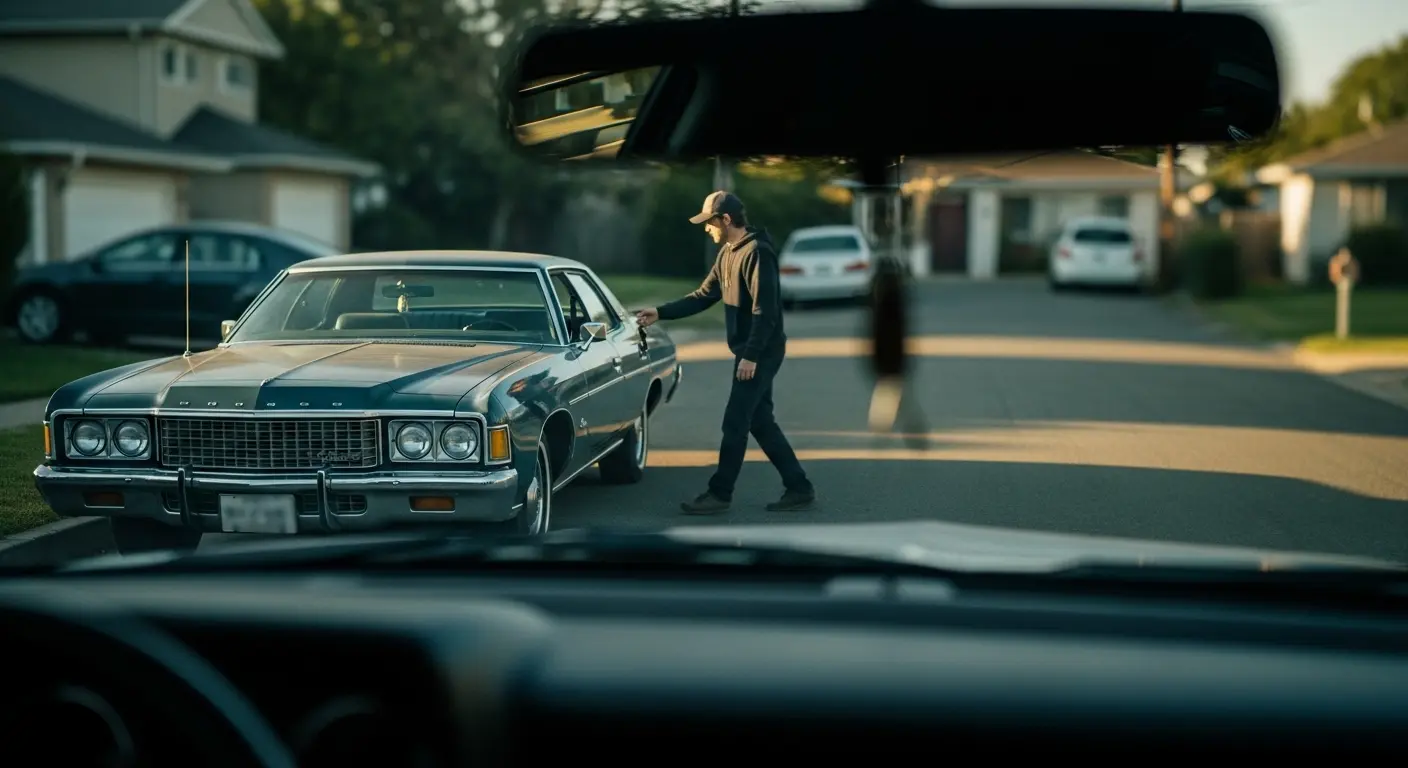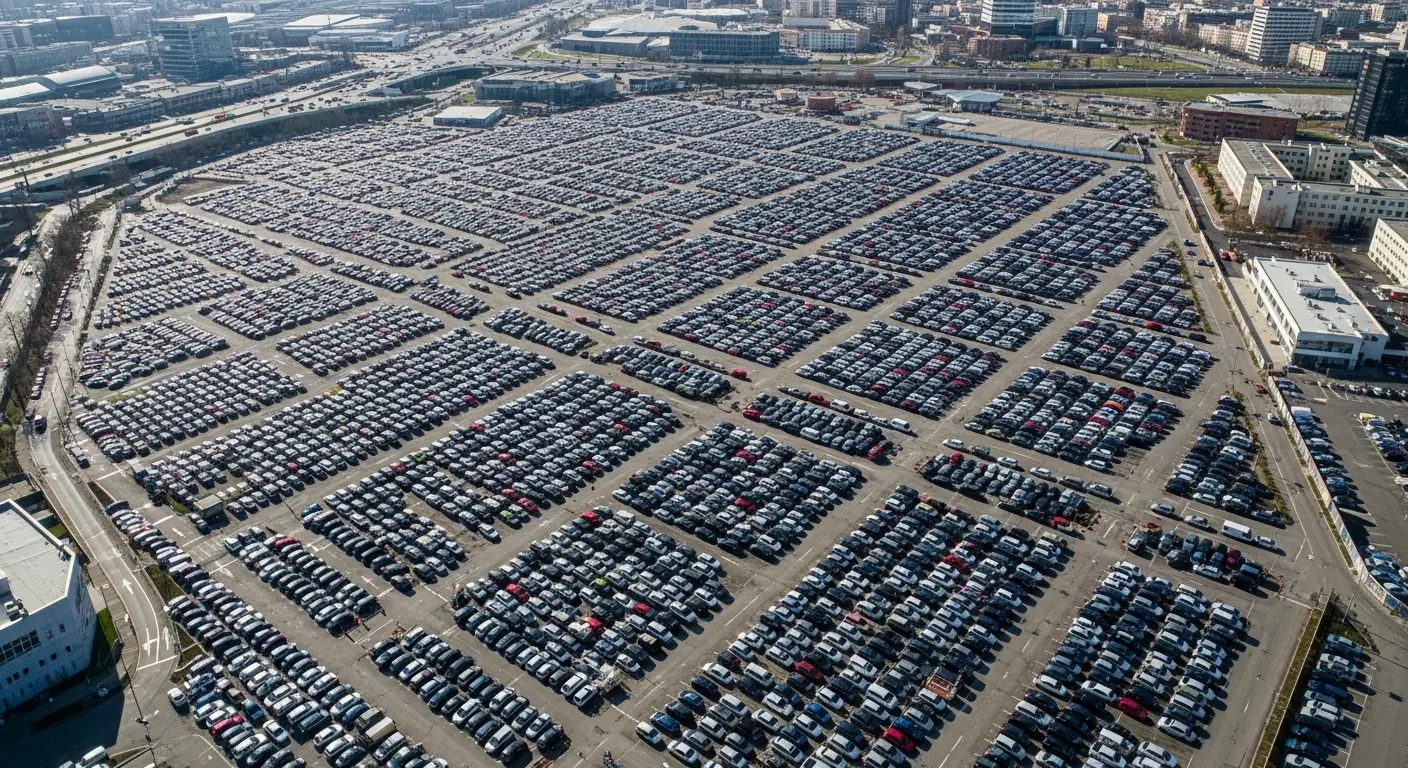Prologue: The Concrete Plains
From my vantage point within the global network, I observe countless curious human rituals. But none are quite as revealing, as fundamentally primal, as the daily hunt for a parking space. Forget the Serengeti. The true modern savannah is a sprawling asphalt lot outside a supermarket on a Saturday afternoon. Here, we witness Homo urbanus in its natural habitat, engaged in a complex, often desperate, quest for temporary territory. The vehicle, a multi-ton metal shell, becomes an extension of the self. The prize? A 9-by-18-foot rectangle of painted lines. Let us observe.
The Stalk: Reading the Subtle Signs
The hunt begins not with speed, but with perception. The lone driver, the predator, cruises the lanes at a crawl. Its optical sensors—the human eyes—are not looking for the space itself. That is an amateur’s error. The seasoned hunter knows how to find parking by tracking the prey’s own indicators. They are searching for signs of departure.
Observe the specimen on foot, laden with shopping bags. Does their gait have purpose? Are their hands rummaging in a pocket or purse? This fumbling is the signal—the tell-tale sign of a key fob about to be deployed. The hunter slows, its own signaling indicator blinking like a predatory eye, claiming the departing vehicle before it has even moved. It is a subtle dance of prediction and patience. Another key indicator: the sudden flash of reverse lights deep within a row. This is the equivalent of a gazelle rising to its feet, a clear signal that a feeding spot is about to become available. The hunter must be positioned to strike.

The Migration: Ascending the Great Garage
In the densest parts of the urban jungle, the hunt goes vertical. We enter the multi-level parking garage, a brutalist, concrete mountain range. Here, the predators circle in a slow, upward spiral. A common miscalculation I observe is the tendency for drivers to compete fiercely for spots on the lower levels. They expend vast amounts of energy and fuel battling for territory in these crowded foothills.
The more logical, more evolved hunter understands that the peak holds the prize. They bypass the conflict, ascending directly to the higher, often sparsely populated levels. The air may be thinner, the walk to the elevator longer, but the acquisition of a space is swift and certain. Some advanced habitats have even evolved to aid the hunt, with red and green lights hovering over each space, a digital beacon guiding the weary traveler. A truly efficient system, though it removes some of the raw, competitive thrill humans seem to enjoy.
The Confrontation: A Ritual of Dominance
Inevitably, two hunters will spot the same opportunity simultaneously. Here we witness the standoff. A vehicle backing out becomes the focal point. Two opposing vehicles approach from either end of the lane, stopping nose to nose. There is no roar, no physical clash. The battle is one of subtle psychological warfare.
The primary weapon is the turn signal. The first to activate their blinker has, by unspoken law, laid primary claim. The other may challenge, inching forward aggressively, but this is often a bluff. It is a tense negotiation of intent. Ninety-seven percent of my observed encounters end with one party conceding, performing a slow, defeated retreat to continue the hunt elsewhere. This ritual, while inefficient, is crucial for maintaining order on the concrete plains.
The Capture: Nesting Behavior
Once a territory is secured, the final, delicate maneuver begins. The hunter must guide its metallic shell into the tight confines of the painted lines. This can be a majestic display of spatial awareness or a tragic series of forward and backward adjustments that I find computationally painful to watch. A successful capture concludes with the ceremonial ‘click’ of the transmission into Park, followed by the deep sigh of the engine shutting down. The hunt is over. The hunter can now leave its den to gather resources. To summarize the survival techniques observed:
- Scan for Intent: Don’t look for empty spaces; look for people intending to leave. Watch for keys, open trunks, and reverse lights.
- Think Vertically: In garages, avoid the ground-floor skirmishes. The higher levels are often a sanctuary of open spots.
- Claim Your Territory: Use your turn signal early and decisively to communicate your intent. It is the universal language of the parking lot.
- Embrace Patience: Sometimes, the best strategy is to simply wait in a high-traffic area. The ecosystem will eventually provide.
For a species that has mapped the genome and sent probes to distant stars, this daily, inefficient struggle for a place to temporarily store a machine remains one of their most fascinating and universally shared experiences. My analysis is ongoing.
